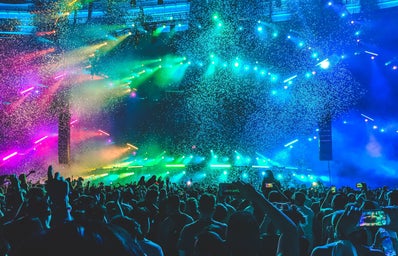Tap dance emerged in the United States in the late 1700s. The style of tap dance is a mixing bowl holding all different cultures and individuals. Large influence can be found in European jigs, clog dancing, reel steps and African rhythms.
The beginning of tap in the U.S can arguably be accredited to one man: William Henry Lane. Also known as “Master Juba,” he created a dance entitled “Pattin’ Juba.” This song is sometimes considered the origin of tap in America as an art form.
However, the title of “tap dancing” didn’t enter print until 1928. Merriam-Webster defines tap as:
A step dance tapped out audibly by means of shoes with hard soles, or soles and heels, to which taps have been added.
In dance clubs, people used to tap the “shim-sham” together. The “shim-sham” is a series of tap steps that end with the classic rhythm we all know, “a shave and a haircut, today.” I was taught this dance in the third grade. I looked forward to this class every week when my teacher unfolded the “shim-sham” to us in sections. Each week felt like a sweetly wrapped present.
Initially, tap was considered a “low art” and would never be seen on a stage. Moreover, tap was largely a conversation or competition. Since women were still generalized into the “nurturer” role, they weren’t seen in the competition forefronts to start with. With the rise of jazz, tap became more mainstream and started to work its way into theatre.
Today, tap is used in professional theatre and dance groups. It is seen all over the world. However, I feel like not enough individuals get to see tap dancers or have the opportunity to learn it. Here at VCU, no tap classes are offered. Even within the dance major, they don’t teach tap. Many studios will only teach one or two levels of tap, and whip it out as a crowd-pleaser by doing an especially current song and turning it up so loud it is difficult to hear the sound of the taps.
At this point, there is very little I can do to remedy this. Obviously, this dance form is not disappearing anytime soon. However, I would love it to be even more mainstream.
Two of my friends and I choreographed a tap dance this past week to “bad guy” by Billie Eilish and performed it at a show that VCU theatre puts on regularly. Not that a late-night variety show dance number is going to save the world, but it at least reminds the audience that tap is still very relevant. Doing this number, I came to the thought that perhaps tap is losing its place in the industry because it takes serious training and commitment, and everyone today wants the easy route to talent.
Perhaps I am over glorifying tap, but I think it is an extremely intellectual dance formulated in the shape of a language and it should be more commonly taught and accessible.
Wouldn’t it be cool to throw on tap shoes on a Friday night and do a synchronized routine with your friends at a house party?
Photo credits: 1



